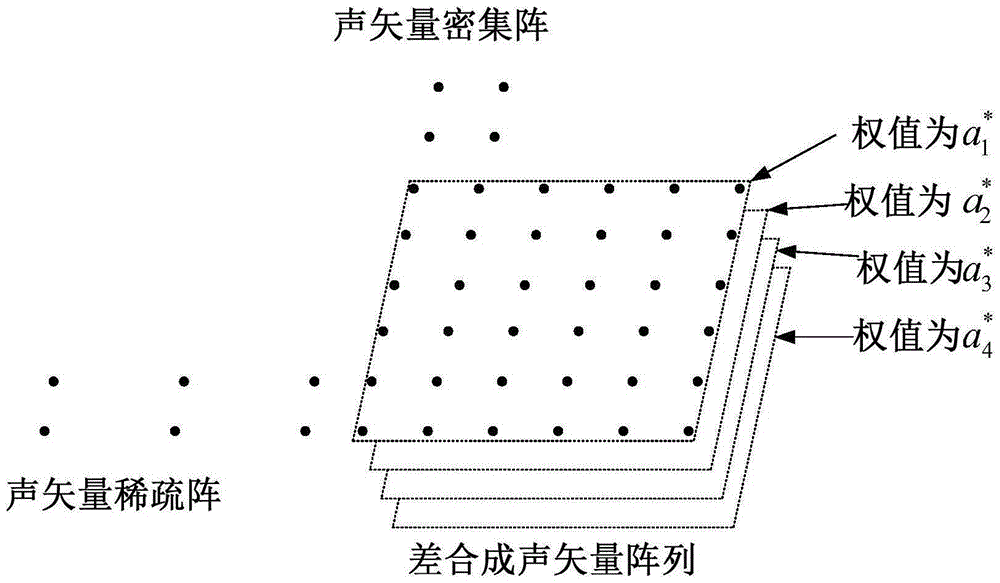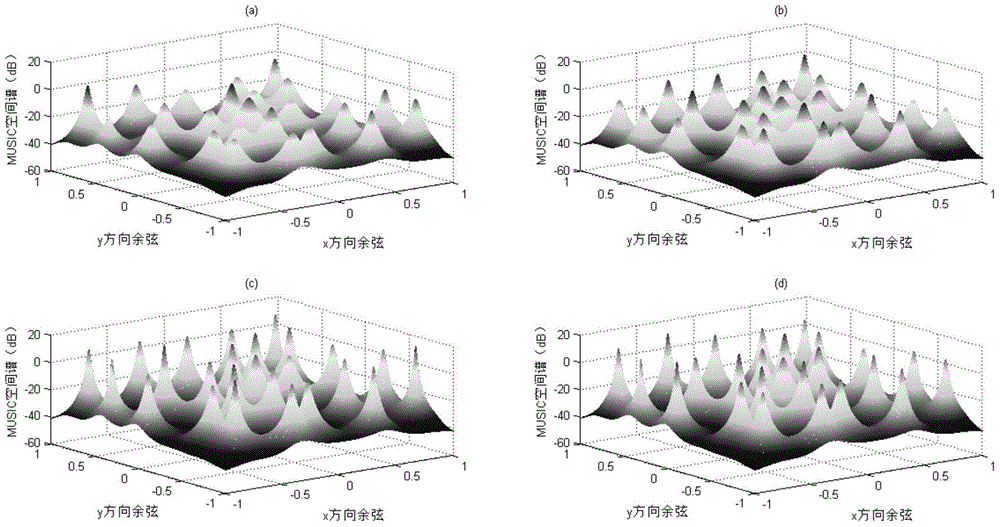Target direction-finding method based on acoustic vector two-dimensional nested array
An acoustic vector and acoustic vector sensor technology, which is applied to direction finders using ultrasonic/sonic waves/infrasonic waves, can solve problems such as difficult real-time processing, unfavorable acoustic vector arrays, and huge calculations of fourth-order cumulants
- Summary
- Abstract
- Description
- Claims
- Application Information
AI Technical Summary
Problems solved by technology
Method used
Image
Examples
Embodiment
[0103] Consider a 2-dimensional nested acoustic vector array composed of two 2-dimensional acoustic vector arrays, one of which is located in the sparse grid M according to Mm, and the other array is distributed in the dense grid N in the form of Nn, and the 2-dimensional nested acoustic vector array Vector array related parameters are M=diag{1.5λ,1.5λ}, N=diag{0.5λ,0.5λ}, integer matrix P=diag{3,3}, M 1 = 2, M 2 =2, where λ is the wavelength of the incident signal. From these parameters, it can be seen that the number of physical array elements of the 2-dimensional nested acoustic vector array is 17, and the number of array elements of the finally generated differential synthetic acoustic vector array is 36. In order to make the number of incident signals more than the number of physical array elements, it is necessary to assume 25 Narrow-band planar independent sound signals are incident to the above 2-dimensional nested sound vector array from different directions, where t...
PUM
 Login to View More
Login to View More Abstract
Description
Claims
Application Information
 Login to View More
Login to View More - R&D
- Intellectual Property
- Life Sciences
- Materials
- Tech Scout
- Unparalleled Data Quality
- Higher Quality Content
- 60% Fewer Hallucinations
Browse by: Latest US Patents, China's latest patents, Technical Efficacy Thesaurus, Application Domain, Technology Topic, Popular Technical Reports.
© 2025 PatSnap. All rights reserved.Legal|Privacy policy|Modern Slavery Act Transparency Statement|Sitemap|About US| Contact US: help@patsnap.com



